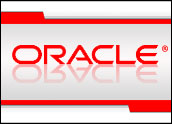
Back in my college days, I worked part-time for an insurance agent. It was an eye-opening job, and not just because it pointed out how many strange and silly ways people could get into car accidents (loose birthday balloons obstructing the driver’s vision, concrete poured off an overpass into a brand-new convertible BMW, a catastrophic collision between a Saturn and some Canadian geese, etc.).
It also pointed out how much of a relationship business insurance is — and how challenging it was for the agent to balance his time between individuals in his customer base. Looking back, it’s clear that he could have benefited mightily from what we now call CRM.
Benefits and Hurdles
Since then, I’ve talked to many people in the insurance business who appreciate the possibilities in CRM. However, insurance is a challenging field for CRM technology — there are independent agents and agents tied to specific insurance companies, and that adds a level of complexity. For instance, if you’re a large company, with your own agents and independent agents, how do you distribute leads? When you do distribute leads, what do you do if they’re not acted upon? How do you share information — and how do you control who sees what and when?
These are not minor considerations — they’re potential causes of conflict between agents and the company that can result in lost revenues.
Agents not only put a face on the company — they also do their fair share of prospecting for new customers. That makes a CRM application a very helpful tool. But where does that tool come from? Do agents go out and build their own (a practice frowned upon by large insurance carriers, judging from my own experience), or do they wait for the IT departments of their parent insurers to deploy CRM down from the head office? If you’re an independent agent, CRM seems like a necessity for selling — but how do you integrate data from your CRM application with the systems of the insurance carriers you work with?
Complex Navigation
Add to that the compliance issues that the insurance industry faces, and you have a thorny set of circumstances to cut through.
But enough of the negativity — there is an abundance of benefits to be had by putting CRM to use in insurance.
For example, your car insurance rates are based on where you live and how far you drive. If an agent has customers for any amount of time, they’re bound to move to new households. An agent who had the time to ask his customers every six months or a year whether their address or driving habits had changed is in a position to help his insureds save money on their car insurance — and also gains an opportunity to upsell that customer on home or life insurance. But agents don’t have the time to ask every customer that question that frequently. CRM would allow them to automate that process and to personalize the communication with the customer.
Here’s another big benefit: having a record of when a prospective customer has interacted with an agency and with the parent company can provide a much better view of what the customer is actually looking for. Insurance industry studies have shown that 20 percent of customers now use four or more interaction points to make decisions about buying insurance. Do the companies they’re buying from realize when a potential customer is interacting with them? CRM can capture those contacts and, if an insurance company seeks a top-to-bottom integration with its agents, it can establish what patterns of contact are being used most frequently by buyers, and then alert agents when a buyer following one of those patterns in contact with them.
The Importance of Integration
That integration is increasingly important — the same studies showed that while 53 percent of insurance buyers use agents, 47 percent buy on-line. The distributed nature of agents poses a structure that encourages the siloing of data — something CRM is useful in avoiding.
Another crucial thing for the insurance industry is the reduction of churn. According to a 2010 study done by Accenture, only 50 percent of insurance customers said they planned to re-purchase insurance from their existing carrier. That’s churn on a massive scale — and it shows how important price is to insurance buyers. But breaking that pattern means emphasizing things beyond price, and studies showed that there were three things that customers valued more than rock-bottom premiums: speed of problem resolution, transparency of prices and charges, and products and services that met their needs. CRM makes addressing all of these easier.
Social media will also play a major role for the insurance industry, and thus social CRM. Just as customers will want to talk about and talk to their insurance carriers, so will they want to talk to and about their agents. Unifying this into a single picture of customer behavior and sentiment will be a task that CRM will facilitate.
Insurance presents a set of challenges to CRM practitioners — but no more so than in other industries with distinct compliance, distribution and sales models. Data has always been critical in the insurance industry — it’s time that the management of that data through modern CRM technology takes a central role in winning customers and curtailing churn.
























































The real dilemma is current CRM software not being flexible enough, because there are ways around this.
Lightweight CRM software companies, like JobNimbus (http://www.jobnimbus.com), are designed to be much simpler and more flexible, than the larger "ingrained" solutions most enterprises use.
Things like job, contact, and document sharing between "guest" users who don’t have accounts solves the issue of sharing information between agents, companies, mechanics, clients, etc. These are low commitment, including free versions that allow anyone access to the information without even making an account.
There are CRM solutions out there that can handle this type of work. It shouldn’t have to be an Agent-specific software nor will it come as a giant software suite that requires tons of commitment and integration. It will come from lightweight, nimble solutions.
Thanks for your thoughts!
I absolutely agree that CRM is under-utilized because of the hurdles of adoption.
If every single employee of a business, adopts and uses CRM this will allow a more precise and efficient communication. This communication achieved, is not only within your company but also with your clients. This will lead to increased ROI and business growth.
The benefits offered can also increase and expand brand awareness internationally. Previously, this would have been difficult because of the many components required for international brand awareness.
Being a member of the GreenRope family, I have been fortunate to witness firsthand the growth & benefits offered to businesses that have utilized social CRM.
If a company has not decided to embrace social CRM or if they ahve not fully adopted and integrated social CRM AM ongst all of their employees, it would be extremely wise to do so.